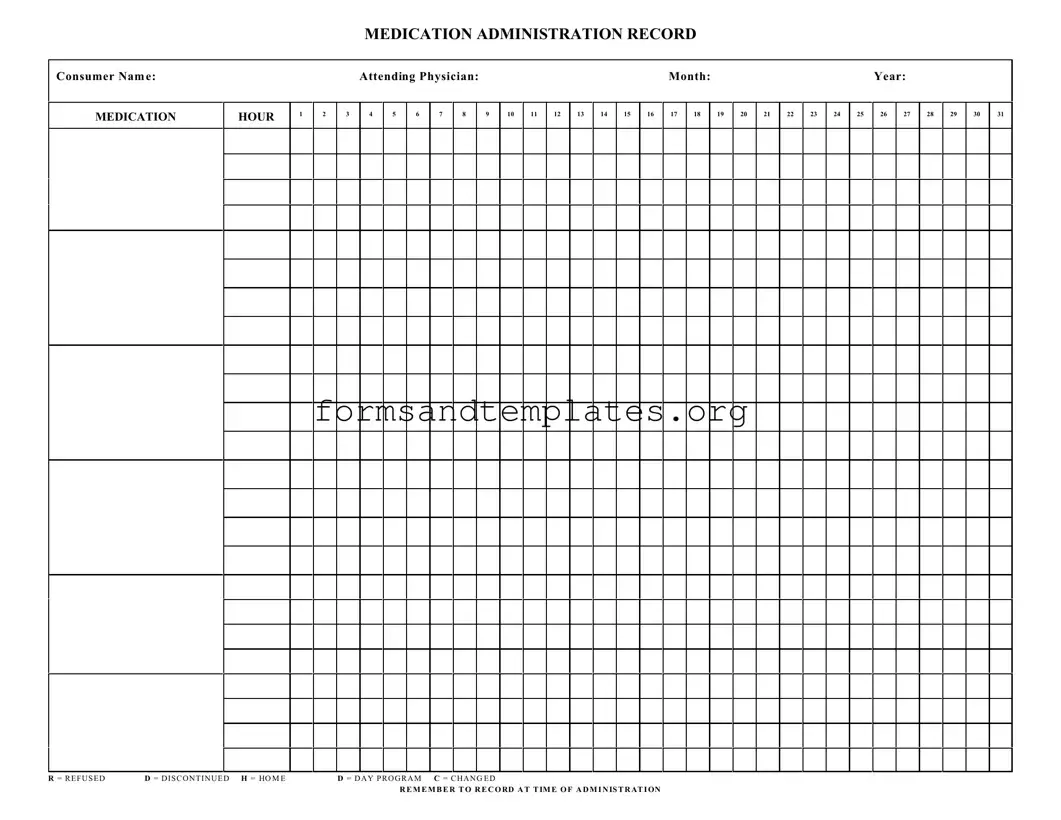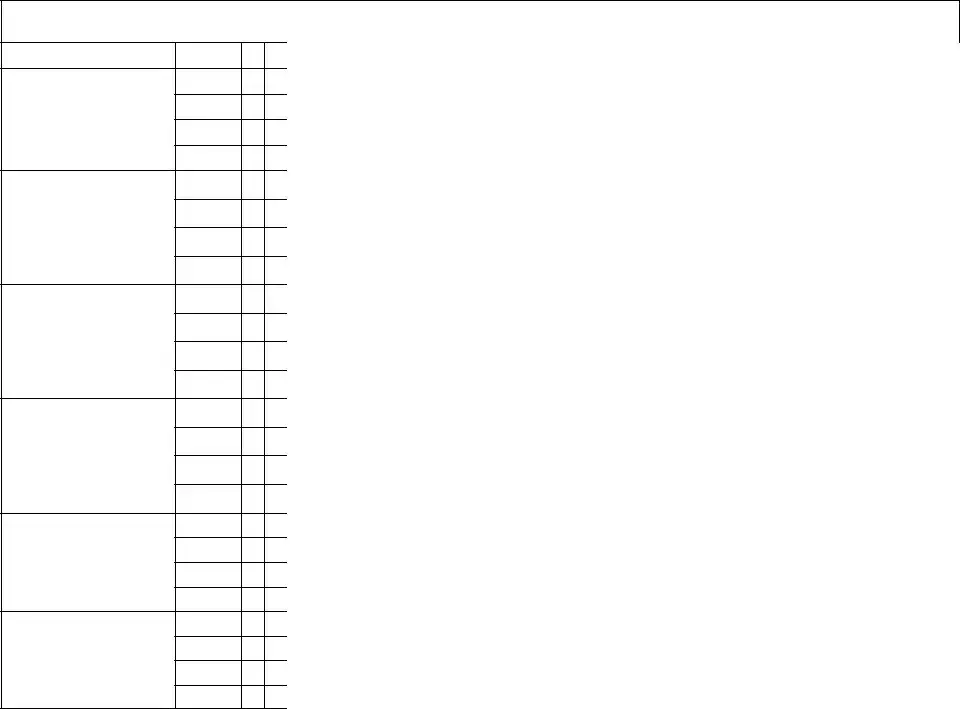What is a Medication Administration Record Sheet?
The Medication Administration Record Sheet (MARS) is a crucial document used in healthcare settings to track the administration of medications to patients. It provides a systematic way to record when and how medications are given, ensuring that each patient's medication regimen is followed accurately.
Who should fill out the Medication Administration Record Sheet?
The MARS should be completed by healthcare professionals responsible for administering medications, such as nurses or certified medication aides. It is essential that the person filling out the form is familiar with the patient's medication schedule and has the authority to administer medications.
The MARS typically requires the following information:
-
Consumer Name
-
Attending Physician
-
Month and Year
-
Medication details for each hour of administration
-
Notations for refused, discontinued, or changed medications
Accurate and complete information is vital for maintaining patient safety and ensuring proper medication management.
How should medication refusals be recorded?
If a patient refuses medication, it should be documented on the MARS by marking an "R" in the appropriate hour column. This notation helps healthcare providers track medication adherence and identify any patterns that may require further investigation.
The letter "D" stands for "discontinued." This notation should be used when a medication is no longer prescribed for the patient. It is important to indicate this change promptly to avoid administering outdated or unnecessary medications.
How can changes to medication be documented?
When a medication is changed, the healthcare provider should use the letter "C" to indicate this on the MARS. Additionally, it is crucial to provide details about the new medication, including dosage and administration times, to ensure clarity and continuity of care.
Why is it important to record the time of administration?
Recording the exact time of medication administration is essential for several reasons. It helps ensure that medications are given at the correct intervals, aids in monitoring the effectiveness of the treatment, and provides a clear record for any future medical evaluations. Accurate timing is vital for patient safety and therapeutic efficacy.

